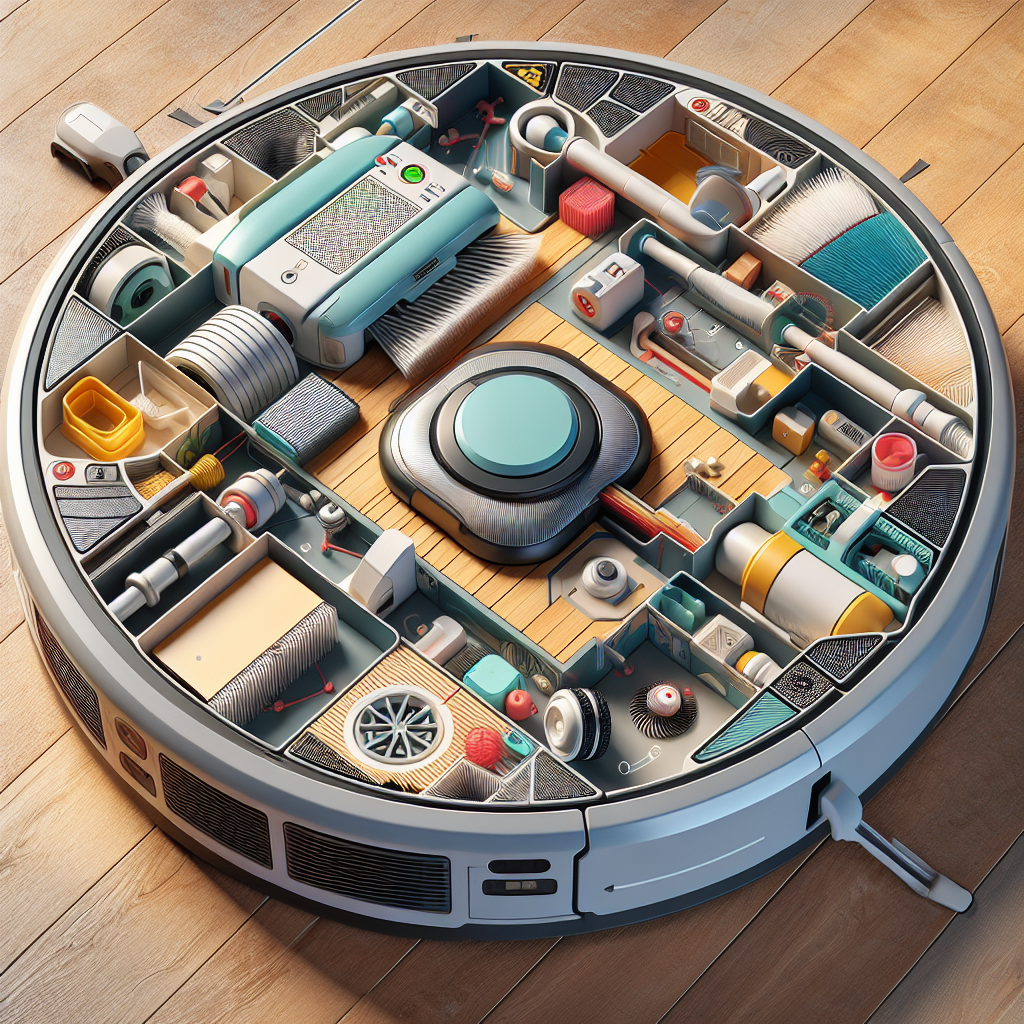Robotic cleaning technology has become increasingly popular in modern households, making cleaning easier and more efficient than ever before. Still, many homeowners wonder: how does a robot vacuum work? In this article, we’ll explore the fascinating mechanics and intelligent features behind these smart devices, answering both the primary question and giving insights into how does the vacuum work in general.
Summary
- Robot vacuums operate using a combination of sensors, brushes, suction technology, and intelligent navigation to autonomously clean floors.
- These devices detect dirt, navigate obstacles, and even return to their charging station on their own.
- The latest models, like the RoboMaidz Robot Vacuum, offer customizable cleaning modes and app-based controls for seamless automation.
- This article explains the core components behind how robot vacuums work, their cleaning mechanisms, and tips for effective use.
Introduction: The Rise of Smart Cleaning Robots
Imagine coming home to spotless floors—without having to lift a finger. With robot vacuums like the RoboMaidz Robot Vacuum, this is now a reality. These compact, smart devices have transformed home cleaning by handling dust, dirt, and pet hair autonomously. But what enables a small disk-shaped gadget to navigate rooms and clean efficiently? Let’s discover how does a robot vacuum work behind the scenes.
Key Components of a Robot Vacuum
Robot vacuums consist of several interconnected systems that work together for intelligent cleaning:
- Sensors: Detect obstacles, drops, and room layout.
- Brushes: Agitate and sweep dirt into the suction path.
- Suction Motor: Creates airflow to lift dust and debris.
- Wheels & Drive: Enable movement and navigation.
- Processor & Algorithms: Decide the cleaning path and avoid collisions.
- Battery & Charging Dock: Ensure continuous operation and self-charging.
How Does a Robot Vacuum Work? Step-By-Step Breakdown
1. Mapping and Navigation
At the heart of a robot vacuum’s intelligence are its sensors and mapping technology. Most modern vacuums use a mix of infrared, laser (LiDAR), or visual sensors to scan their surroundings. Some advanced models, like the RoboMaidz Mopping Robot, even build digital maps of your rooms, determining the most efficient route for thorough cleaning.
- Obstacle Detection: Edge sensors prevent falls; bumpers help avoid furniture.
- Smart Mapping: High-end models create customizable maps, letting you set virtual boundaries or specific cleaning zones.
2. Cleaning Mechanics: Brushes and Suction Power
How does the vacuum work when it comes to actually collecting dirt? Inside its compact body, the robot vacuum uses rotating side brushes to sweep debris toward a central rolling brush. This brush stirs up dust and particles, which are then swept into the powerful suction pathway.
The vacuum’s motor generates airflow, pulling dirt into its internal dustbin or, in the case of models like the RoboMaidz Robot Vacuum, into a self-emptying base for added convenience.
3. Dirt Detection and Adaptive Cleaning
Some advanced robot vacuums feature dirt sensors that recognize extra-dirty areas—like the entryway or kitchen. When the vacuum detects more dust, it will automatically increase suction or perform extra passes to ensure a spotless floor.
4. Automatic Charging and Scheduling
Once the robot vacuum senses a low battery, it intelligently returns to its charging dock, powers up, and resumes cleaning where it left off. Users can also set cleaning schedules via app controls, so the vacuum runs automatically at your preferred times, whether you’re home or away.

Comparing Robot Vacuum Technology to Traditional Vacuums
When considering how does the vacuum work in a traditional model versus a robot, the differences are profound:
- Manual Effort: Traditional vacuums require you to guide and move them, while robot vacuums operate independently.
- Navigation: Robot vacuums use sensors and smart mapping, whereas traditional models depend entirely on the user’s movement and attention.
- Automation: With scheduling and app control, robot vacuums like the RoboMaidz Robot Vacuum can work automatically, keeping your home clean with minimal intervention.
Benefits of Robot Vacuums in Everyday Life
- Time-saving: Automate one of the most tedious chores in your home.
- Consistent Cleaning: Keep floors clean every day with scheduled runs.
- Accessibility: Easily fits under furniture and reaches places traditional vacuums can’t.
- Smart Features: Integration with mobile apps or smart speakers, offering effortless control.
Tips for Getting the Best Results From Your Robot Vacuum
- Clear Obstacles: Pick up toys, socks, and cords that could impede progress.
- Maintain Sensors and Brushes: Regularly clean the sensors, wheels, and brushes to ensure peak performance.
- Use Virtual Boundaries: Many models allow you to mark “no-go” areas to prevent the vacuum from entering certain spaces.
- Set a Regular Schedule: Automatic cleaning keeps dust and allergens at bay.
Conclusion: Embracing the Future of Clean Homes
Robotic vacuums have redefined what it means to keep a home tidy. By combining intelligent navigation, powerful suction, and easy automation, they answer the question, “how does a robot vacuum work?” with every seamless cleaning cycle. Brands like RoboMaidz continue to innovate, making smart cleaning accessible and effective for everyone. Whether maintaining everyday tidiness or targeting tough messes, a robot vacuum is an investment in a cleaner, smarter home.







